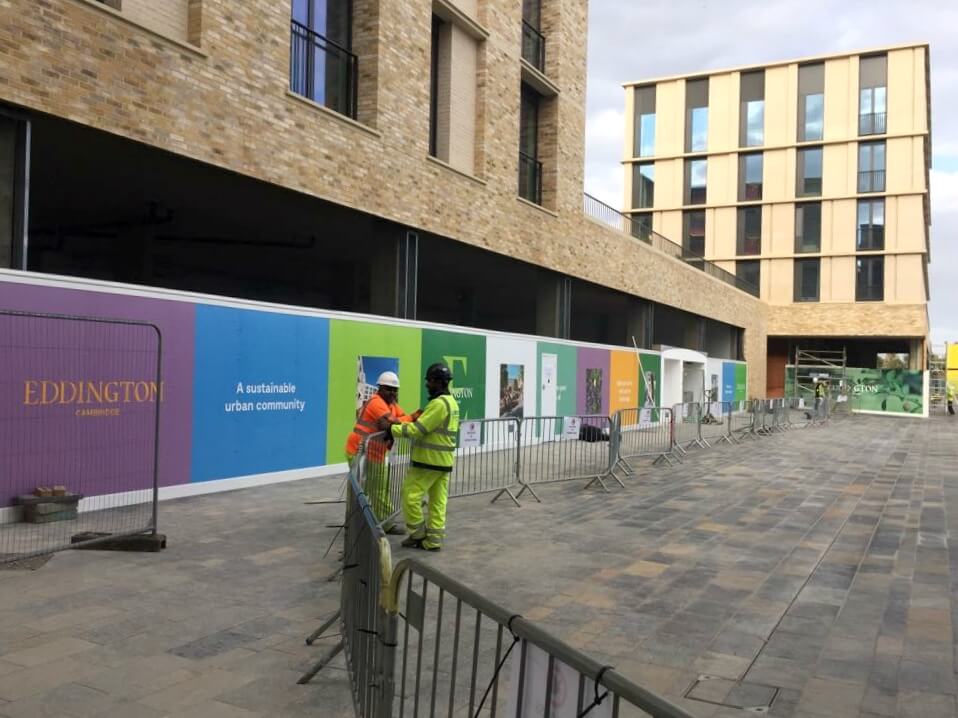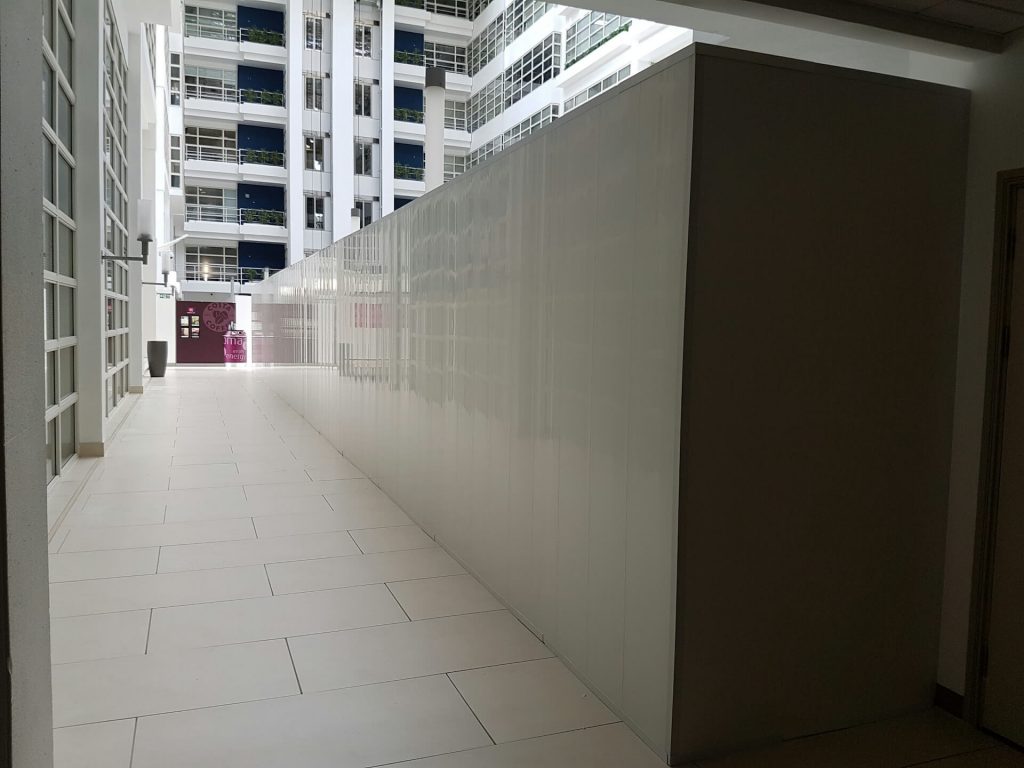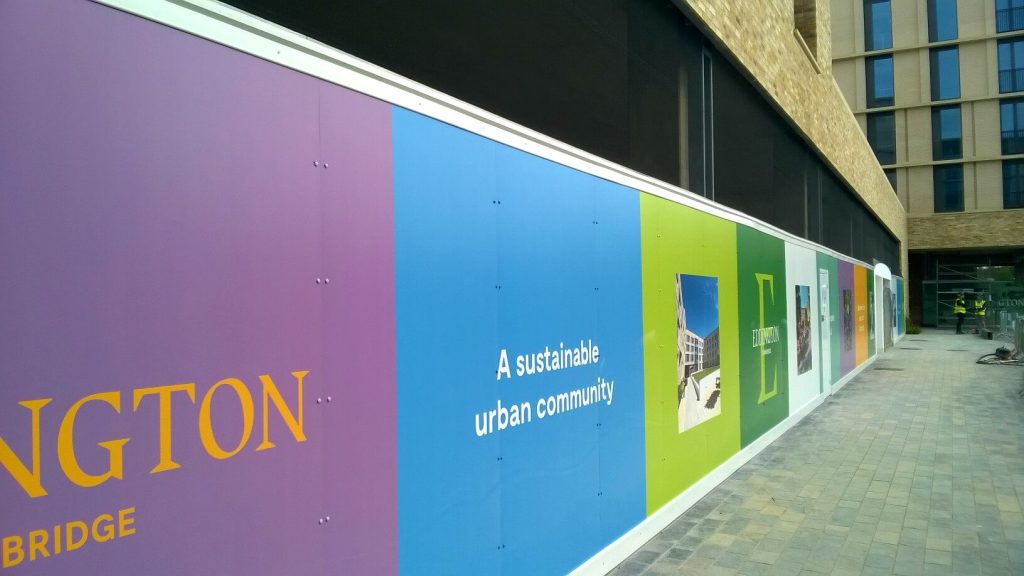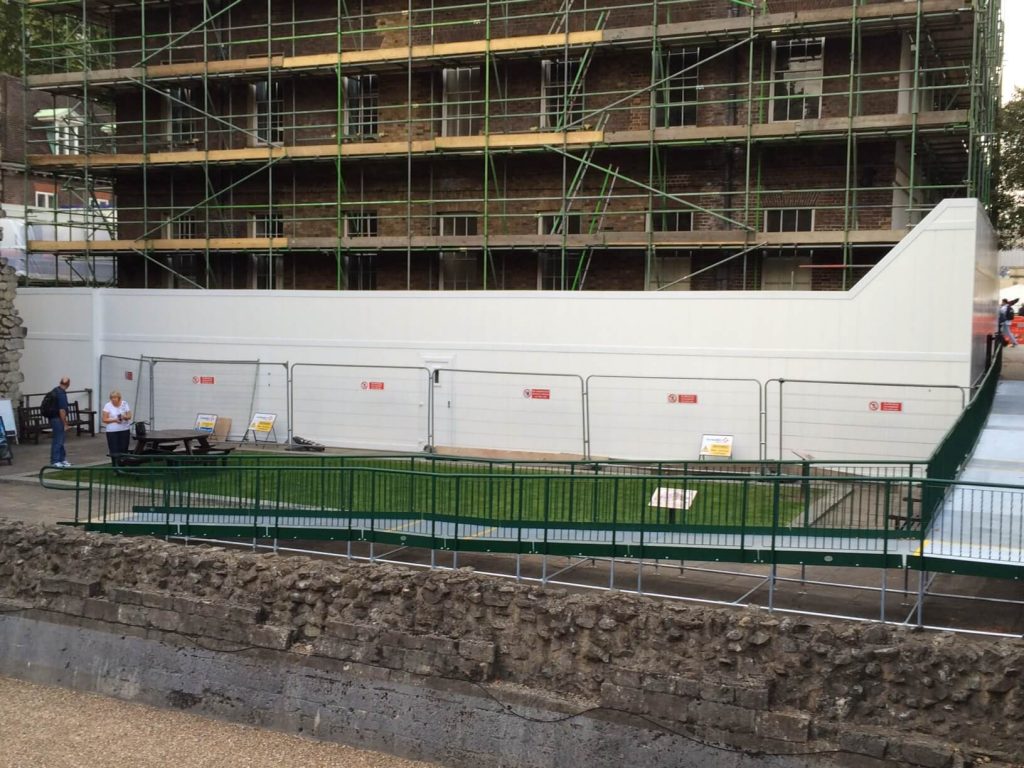When it comes to construction projects, one of the first steps is often erecting site hoarding to secure the area and protect the public from potential hazards.
However, many contractors and project managers find themselves asking: do you need planning permission for site hoarding?
This crucial question revolves around construction site hoarding planning permission, a topic that can significantly impact project timelines and budgets.
In this comprehensive guide, we’ll explore the intricacies of planning permission for site hoarding, delving into local regulations, temporary structures, and the specific requirements that may apply to your construction project.
We’ll cover everything from height restrictions and conservation areas to advertising considerations and permitted development rights. By the end of this article, you’ll have a clear understanding of when and why you might need planning permission for your site hoarding, and how to navigate the process efficiently.

Understanding Site Hoarding and It’s Purpose
Before we dive into the planning permission aspects, let’s briefly explore what site hoarding is and why it’s essential in the construction industry.
What is Site Hoarding?
Site hoarding refers to temporary structures, typically wooden or metal panels, erected around the perimeter of construction sites. These barriers serve multiple purposes:
- Security: Preventing unauthorised access to the site
- Safety: Protecting members of the public from potential hazards
- Privacy: Shielding ongoing work from public view
- Branding: Providing space for hoarding graphics and advertising
- Information: Displaying essential information and site rules, as well as contact information.
The Importance of Proper Site Hoarding
Effective site hoarding is crucial for several reasons:
- Legal compliance: Meeting health and safety regulations
- Public protection: Ensuring the safety of passersby
- Site security: Deterring theft and vandalism
- Project image: Presenting a professional appearance to the local community

When is Planning Permission Required?
While temporary structures like site hoardings often fall under permitted development rights, there are several scenarios where planning permission may be necessary:
Height Restrictions
One of the primary factors determining whether planning permission is required is the height of the hoarding:
- Hoardings up to 2 metres in height: Generally, these do not require planning permission.
- Hoardings exceeding 2 metres in height: Planning permission is typically required for taller structures.
Conservation Areas and Listed Buildings
Special rules often apply in conservation areas or for projects involving listed buildings:
- Conservation areas: Additional restrictions may be in place to preserve the character of the area.
- Listed buildings: Any alterations, including temporary structures, may require consent.
Advertising and Hoarding Graphics
If your site hoarding will display advertisements or large-scale graphics:
- Express consent: May be required under the Control of Advertisements Regulations.
- Size and content: Restrictions may apply to the size and nature of displayed content.

Duration of Installation
The length of time the hoarding will be in place can also impact planning requirements:
- Short-term projects: Temporary hoardings for brief periods may have more lenient rules.
- Long-term installations: Extended use of hoarding might necessitate planning permission.
Understanding Local Planning Policies
Each local authority may have its own specific regulations regarding site hoarding:
- Local plans: Consult your area’s local plan for guidance on temporary structures.
- Zoning restrictions: Certain zones may have stricter rules for construction site perimeters.
Contacting Your Local Planning Authority
Before erecting any site hoarding, it’s advisable to:
- Seek pre-application advice: Many local authorities offer this service to clarify requirements.
- Submit enquiries: Ask about specific regulations for your site and project type.
Understanding Permitted Development
In many cases, site hoarding falls under permitted development rights, meaning formal planning permission isn’t required. However, it’s essential to understand the limitations:
- Height restrictions: As mentioned, typically limited to 2 metres.
- Temporary nature: Must be clearly temporary and related to ongoing construction work.
- Public rights of way: Must not obstruct public highways or footpaths.
Exceptions to Permitted Development
Certain circumstances may negate permitted development rights:
- Areas of Outstanding Natural Beauty (AONB): Special rules may apply.
- National Parks: Additional restrictions are often in place.
- Article 4 Directions: Local authorities can remove permitted development rights in specific areas.

Regulations for Hoarding Advertising
If you plan to use your site hoarding for advertising purposes:
- Size limitations: Restrictions on the size of advertisements may apply.
- Content regulations: Certain types of content may be prohibited or require special permission – if you’re unsure, it’s better to double check.
- Illumination: Rules around illuminated signs can be strict, especially in residential areas.
Ensuring Compliance and Safety
To maintain a safe and compliant construction site:
- Regular inspections: Conduct routine checks of hoarding integrity.
- High visibility: Use reflective materials or lighting for improved safety, especially at night.
- Secure fixtures: Ensure hoarding is properly secured to withstand weather conditions.
Engaging with the Local Community
Positive community relations can be fostered through:
- Informative displays: Use hoarding to share project updates and timelines.
- QR codes: Provide easy access to additional information about the project.
- Aesthetic considerations: Design hoarding that complements local surroundings where possible.
Understanding Your Responsibilities
As a principal contractor or project manager, it’s crucial to:
- Comply with regulations: Ensure all necessary permissions are obtained.
- Maintain safety: Regularly assess and address any potential hazards.
- Protect public access: Ensure rights of way are respected and alternative routes provided if necessary.
Potential Consequences of Non-Compliance
Failing to obtain necessary permissions can lead to:
- Enforcement action: Local authorities may require the removal of unauthorised structures.
- Fines: Penalties for breaching planning regulations can be substantial.
- Project delays: Rectifying planning issues can significantly impact timelines.
Conclusion
In summary, while site hoarding is often considered a temporary structure that may not require planning permission, there are numerous factors to consider. Height restrictions, location specifics, advertising intentions, and local regulations all play a role in determining whether formal planning permission is necessary.
The general verdict is clear: Before erecting site hoarding, it’s essential to check whether planning permission is required. While temporary structures like site hoardings often fall under permitted development rights, there are notable exceptions:
- Height restrictions: Hoardings exceeding 2 metres in height typically require planning permission.
- Conservation areas: Special rules may apply in conservation areas or for listed buildings.
- Advertising: If the hoarding will display advertisements, additional consent may be needed.
To ensure compliance and avoid potential legal issues or project delays, always consult with your local planning authority before installation. By taking a proactive approach to planning and compliance, you can ensure your construction site hoarding not only serves its practical purposes but also adheres to all necessary regulations, contributing to a smooth and successful project execution.
About Plas-Shop
At Plas-Shop, we’re a leading supplier of temporary hoarding solutions, offering a range of products designed to create safe and secure workspaces during construction or refurbishment projects.
Our hoardings are sustainable, eco-friendly, versatile and can be used in various settings, including construction sites, shopping centres, and office spaces. They’re known for their durability and customisation flexibility, whilst providing a clean, professional appearance, shielding members of the public from potential hazards.
To make the process as convenient as possible, we offer bundles with our hoardings, including everything from baseplates to screws.
We’ve been trusted by some of the most significant brands in the country, including Giorgio Armani, the BBC, BT, Dyson, and John Lewis, and are proud to serve the entire of the UK.
To get in touch, all you have to do is dial 01626 241124, or email [email protected].







